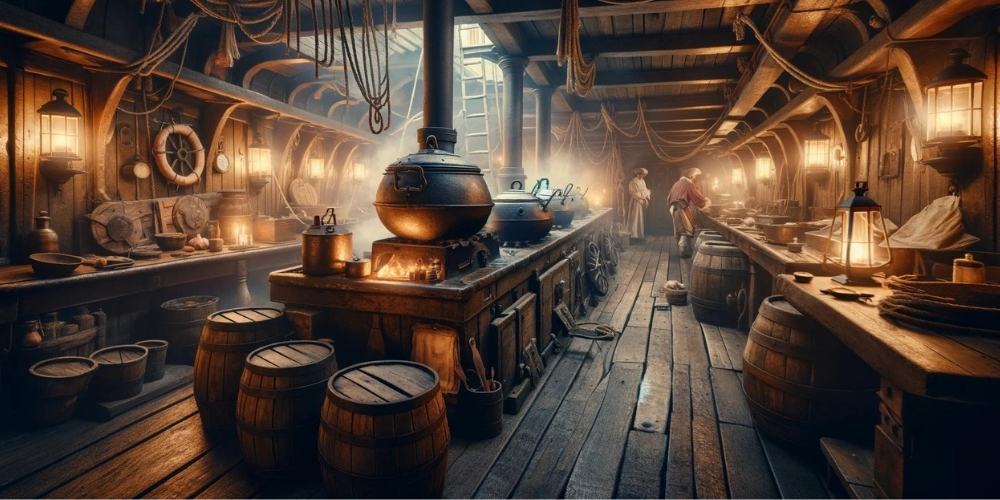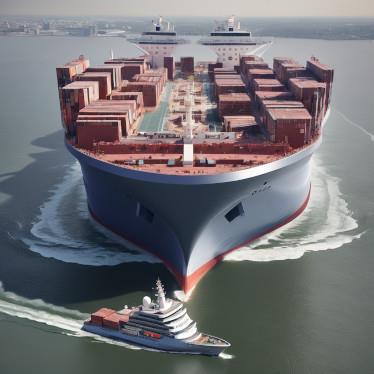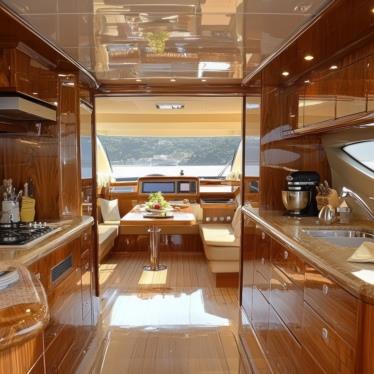
A ship's galley, also known as a galley, has always been the heart of a ship, providing nutrition and comfort to both sailors and passengers. The evolution of ship kitchens from past to present is a fascinating journey that reflects the technological, cultural and culinary changes in maritime history. In this blog, we will explore the transformation of ship kitchens from the age of wooden ships and iron men to the modern era of luxury ships and high-tech naval vessels.
Exploration and the Age of Wooden Ships
In the age of exploration, ship galleys were primitive and harsh environments. They were usually located on the lowest level of the ship to minimize the danger of fire. These galleys were equipped with a simple brick or stone hearth where food was cooked over an open fire. The diet consisted mainly of salted meat, rusks and fresh provisions available during landings. Limited space, poor ventilation and the constant movement of the ship made cooking a daunting task.
The Age of Sail and Maritime Innovation
As maritime technology advanced during the Age of Sail, so did the design of ship's galleys. The introduction of the cast iron stove in the 18th century was an important development, allowing for more controlled cooking and a wider variety of dishes. These stoves were bolted to the deck to prevent tipping over in rough seas. Navy ships also began to employ skilled cooks and a ration system was introduced, providing each sailor with a certain amount of food per day. Despite these improvements, conditions in the galley remained harsh and meals often monotonous.
The Steamship Era and the Rise of Passenger Travel
The advent of steamships in the 19th century transformed sea travel, making it faster, safer and more reliable. It was also a period of increased passenger travel, which led to significant changes in the design and operation of ship's galleys. Kitchens became larger and better equipped, with improved stoves, ovens and other cooking appliances. The menu expanded to cater to the tastes of passengers from different cultures, and dining on board became a more sophisticated experience. This period marked the beginning of the transition of the ship's galley from a purely functional space to one of social and culinary significance.

20th Century: Warships and Luxury Ships
In the 20th century, the contrast between military and civilian ship kitchens became more pronounced. Navy galleys were designed for efficiency and durability, with stainless steel surfaces and compact, multi-purpose cooking equipment. They had to meet the needs of large crews, often under wartime conditions. In contrast, luxury ships such as the Titanic had large dining halls and galleys equipped with the latest culinary technology and served gourmet meals prepared by top chefs.
The Modern Era: Technology and Sustainability
Today, ship galleys are marvels of modern technology and design. On navy ships, they are equipped with state-of-the-art appliances and designed to efficiently feed hundreds of crew members. On cruise ships, kitchens are very spacious and divided into different areas for pastries, hot dishes, cold dishes, etc., each equipped with specialized equipment. Sustainability is also increasingly important, with ships taking measures to reduce waste and energy consumption. Menus have become more diverse, catering to a wide range of dietary preferences and cultural tastes.
The evolution of ship kitchens from the sparse and functional spaces of the past to the sophisticated and technologically advanced operations of today reflects broader changes in technology, society and the culinary arts. Whether serving a crew of seafarers or a ship full of vacationers, the galley remains a vital and vibrant part of shipboard life. Looking to the future, it is clear that ship kitchens will continue to evolve, providing comfort and sustenance to those at sea while embracing new technologies and trends.


